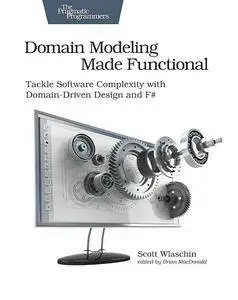Domain Modeling Made Functional by Scott Wlaschin
English | 2018 | ISBN: 1680502549 | PDF/EPUB/MOBI | 312 pages | 3/7/13 Mb
Software Design, Testing & Engineering
English | 2018 | ISBN: 1680502549 | PDF/EPUB/MOBI | 312 pages | 3/7/13 Mb
Software Design, Testing & Engineering
You want increased customer satisfaction, faster development cycles, and less wasted work. Domain-driven design (DDD) combined with functional programming is the innovative combo that will get you there. In this pragmatic, down-to-earth guide, you'll see how applying the core principles of functional programming can result in software designs that model real-world requirements both elegantly and concisely - often more so than an object-oriented approach. Practical examples in the open-source F# functional language, and examples from familiar business domains, show you how to apply these techniques to build software that is business-focused, flexible, and high quality.
Domain-driven design is a well-established approach to designing software that ensures that domain experts and developers work together effectively to create high-quality software. This book is the first to combine DDD with techniques from statically typed functional programming. This book is perfect for newcomers to DDD or functional programming - all the techniques you need will be introduced and explained.
Model a complex domain accurately using the F# type system, creating compilable code that is also readable documentation–-ensuring that the code and design never get out of sync. Encode business rules in the design so that you have "compile-time unit tests," and eliminate many potential bugs by making illegal states unrepresentable. Assemble a series of small, testable functions into a complete use case, and compose these individual scenarios into a large-scale design. Discover why the combination of functional programming and DDD leads naturally to service-oriented and hexagonal architectures. Finally, create a functional domain model that works with traditional databases, NoSQL, and event stores, and safely expose your domain via a website or API.
Solve real problems by focusing on real-world requirements for your software.



